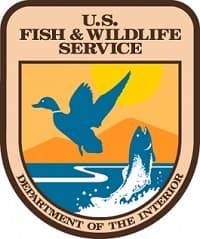Interior Secretary Honors Two Conservation Partnerships in California and Southern Oregon with Major Award
OutdoorHub 01.17.14

Two conservation partnerships involving tribal youth in northern California and southern Oregon and high school students in California were among four U.S. Fish and Wildlife Service partnerships recognized by Secretary of the Interior Sally Jewell during a Partners in Conservation awards ceremony today in Washington, D.C.
The Secretary honored 20 partnership projects nominated by Department of the Interior bureaus that have demonstrated exemplary natural resource conservation efforts through public-private cooperation. The California and southern Oregon partnerships focused on engaging youth in conservation and were among four U.S. Fish and Wildlife Service partnerships to receive awards. Partnerships in Texas and Kansas also received awards.
“Youth and partnerships are and will be extremely valuable to conservation of fish, wildlife and habitats across the nation,” said Ren Lohoefener, Regional Director of the Pacific Southwest Region. “We are honored to recognize these organizations for their deep commitment to young people, our future conservation leaders.”
A description of Service partnerships receiving the 2013 Partners in Conservation award are:
The partnership “Klamath Tribal Leadership Development for Integrative Science and Traditional Ecological Knowledge Program,” northern California and southern Oregon, combined tribal ancestral cultural knowledge about local ecology and resources with high tech capabilities of NASA and other federal natural resources agencies.
In the summer of 2013, a pilot group of tribal students worked with agencies and tribes to link physical river conditions, native salmon populations and cultural values using traditional ecological knowledge to advance resource management.
Students gathered traditional knowledge from discussions with tribal elders and applied it to programs that advance the restoration and management of native fish populations in the Klamath Basin. In 2014, students will expand the information base for decision-making to explore the use of remotely gathered data and models to evaluate river conditions.
Partners include the Service, Bureau of Indian Affairs, U.S. Geological Survey, NASA, U.S. Forest Service, local tribes and other partners. The tribes associated with this program include Quartz Valley Indian Reservation, Resighini Rancheria, Klamath tribes, Karuk Tribe, Yurok Tribe and Hoopla Valley Tribe.
The “Center for Land-Based Learning Partnership,” Sacramento, California, includes the Service and the Center for Land-Based Learning’s Student and Landowner Education and Watershed Stewardship program. The program gives high-school students the opportunity to take part in a yearlong habitat restoration experience combining hands-on conservation with classroom learning. Students participate in restoration projects such as planting native trees, shrubs and grasses, installing irrigation and wildlife habitat structures, and monitoring plant and wildlife populations. Teambuilding, leadership and science activities are also built into each field day. Students improved more than 250 acres of habitat in nearby national wildlife refuges and private lands and the partnership has reached more than 2,500 students. Teachers also receive training through this partnership and, in turn, enhance learning experiences for students.
A total of 14 partnerships were submitted nationwide by Service staff for consideration as part of this year’s awards. Additional information on the selected programs and full listings of entities involved are available here: http://www.fws.gov/home/feature/2014/2013-pic-awards.html.

